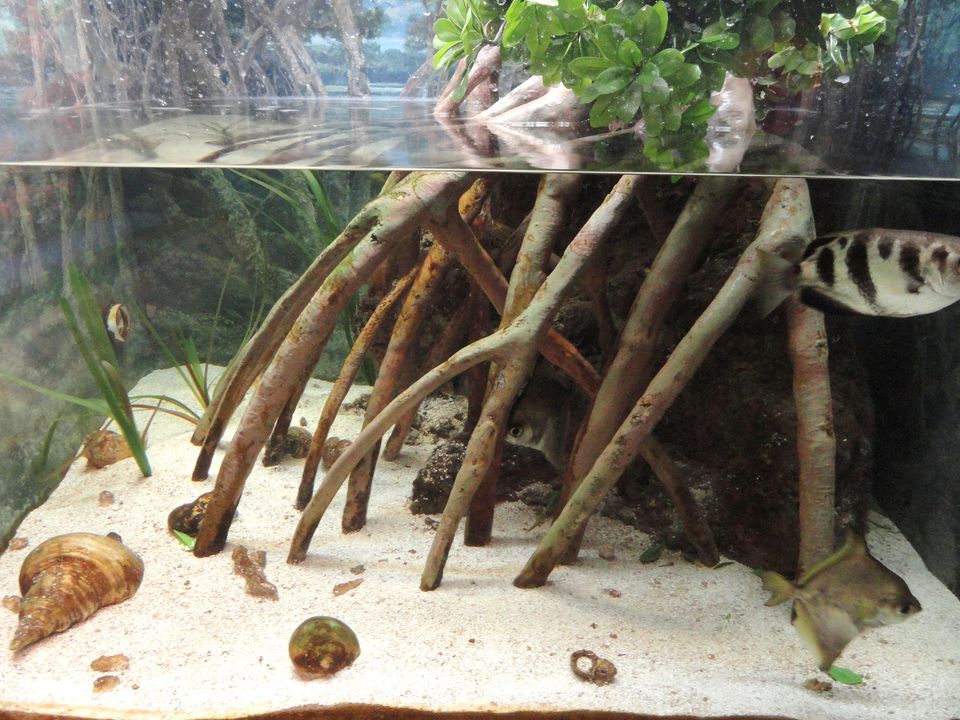Keeping Freshwater Shrimp: A Beginner's Guide
Freshwater shrimp are popular pets due to their colorful appearance and easy care requirements. These small, hardy creatures are fun to watch and can add a touch of whimsy to any tank.

Freshwater shrimp are popular pets due to their colorful appearance and easy care requirements. These small, hardy creatures are fun to watch and can add a touch of whimsy to any tank. If you're thinking about keeping freshwater shrimp as pets, here is a beginner's guide to getting started.
Choosing the Right Tank setup
The first step in keeping freshwater shrimp is choosing the right tank. Freshwater shrimp need at least a 5-gallon tank, but bigger is always better. A larger tank allows them to swim and explore, which can help prevent boredom and improve their overall health.
When choosing a tank, make sure to get one with a filter and a heater to maintain a consistent temperature between 74-78 degrees Fahrenheit. Freshwater shrimp are tropical creatures and require warm water to thrive. The filter is also important to keep the water clean and free of toxins.
In addition to a filter and heater, it's a good idea to invest in a thermometer and a pH test kit to monitor the water conditions. This will help you ensure that the water is at the optimal temperature and pH level for your shrimp.
When setting up the tank, it's important to place it in a location that is out of direct sunlight and away from drafts. Freshwater shrimp are sensitive to temperature fluctuations, so it's important to keep the tank in a stable environment.
Choosing the Right Shrimp
There are many different species of freshwater shrimp available, each with their own unique requirements. Some popular species include Cherry Shrimp, Crystal Red Shrimp, and Blue Velvet Shrimp.
Before choosing a species, it's important to research the specific care requirements to ensure you can provide them with the proper environment. Some shrimp require softer, more acidic water, while others do better in harder, more alkaline water. It's important to choose a species that is compatible with your tank setup and water conditions.
Setting Up the Tank
Once you have the right tank and equipment, it's time to set up the tank. Start by rinsing the tank and decorations thoroughly with warm water to remove any dust or debris. Avoid using soap or other cleaning products, as they can leave behind harmful residue.
Next, fill the tank with treated tap water or bottled water. Tap water typically needs to be treated with a water conditioner to remove chlorine and heavy metals, which can be harmful to shrimp. You can find water conditioners at any pet store or online.
After adding the water conditioner, set up the filter and heater according to the manufacturer's instructions. The filter will help keep the water clean, while the heater will help maintain a consistent temperature.
Before adding your shrimp to the tank, it's important to acclimate them to the new environment. To do this, float the bag containing the shrimp in the tank for 15-30 minutes. This will allow the water in the bag to gradually reach the same temperature as the tank water. After the acclimation period, release the shrimp into the tank.
Feeding Your Shrimp
Freshwater shrimp are omnivorous and should be fed a varied diet of high-quality pellet or freeze-dried foods. These foods are formulated to provide shrimp with the nutrients they need to stay healthy. In addition to commercial foods, you can also supplement their diet with small amounts of blanched vegetables, such as spinach and lettuce, and live or frozen foods like brine shrimp and bloodworms.
It's important to avoid overfeeding, as excess food can lead to water pollution and health problems. Observe your shrimp's behavior and adjust the amount of food accordingly. If you notice uneaten food in the tank, reduce the amount of food you are feeding.
Maintaining the Tank
To keep your shrimp's tank clean and healthy, it's important to perform regular maintenance. This includes performing partial water changes of at least 25% once a week and using a gravel vacuum to clean the substrate and remove any uneaten food or waste.
In addition to performing water changes and cleaning the substrate, it's also important to test the water regularly to ensure the pH, ammonia, and nitrite levels are within the safe range. High levels of ammonia and nitrite can be toxic to shrimp and can lead to serious health problems. You can purchase water test kits at any pet store or online.
Providing a Healthy Environment
In addition to proper nutrition and clean water, freshwater shrimp also need a healthy and comfortable environment to thrive. To create a healthy environment for your shrimp, be sure to include plenty of hiding spots and places to explore, such as plants and decorations. Freshwater shrimp are intelligent creatures and need mental and physical stimulation to stay healthy.
It's also important to avoid overcrowding the tank with other fish, as shrimp are sensitive to water quality and can be easily stressed by aggressive tank mates. It's best to keep shrimp in a tank by themselves or with a few non-aggressive tank mates, such as snails or small fish.
Finally, be sure to keep the tank well-ventilated and provide proper lighting to prevent stress. Freshwater shrimp are sensitive to their environment and need the right conditions to stay healthy and happy.
By following these guidelines, you can create a healthy and comfortable environment for your freshwater shrimp to thrive. Remember to monitor your shrimp's behavior and health regularly and seek veterinary care if necessary. With proper care, your shrimp can live a long and healthy life.




